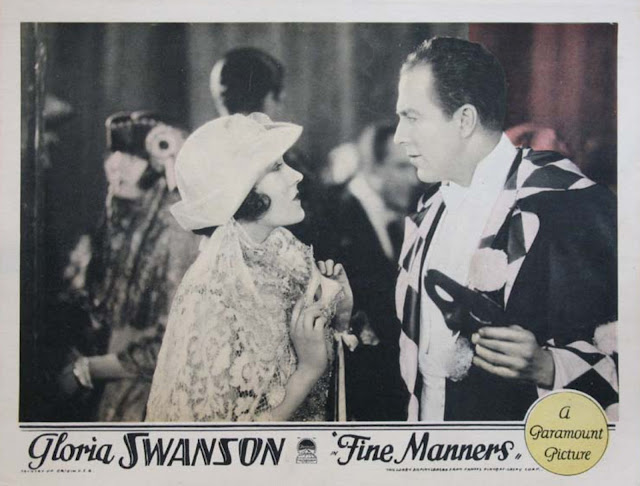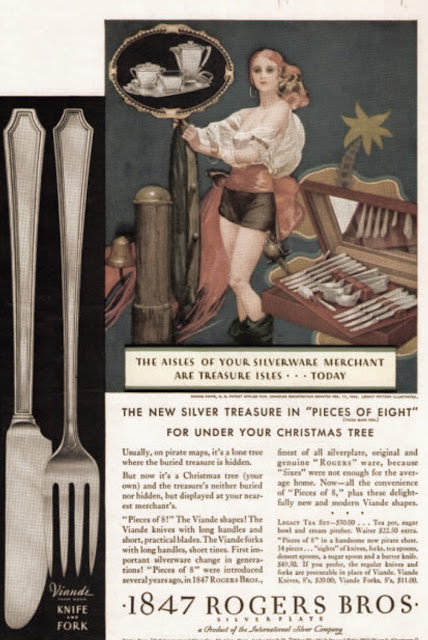The Reagan years were an era of formality, and we dressed for success, as well as for dinner. The tuxedo celebrated its 100th anniversary in the '80s, and black-tie invitations became the norm. Not only did men rush out to rent their tuxedos, but plenty pur- chased them. And instead of basic black or the brighter colors of the Carter years, they suited up in higher-profile styles, richer fabrics and the new designer tuxedos.
Men began pampering themselves, too. Even non-managerial types began trying facials, skin bronzers and tinted moisturizers. They shaved their mustaches, slicked their longish hair back and seriously considered plastic surgery for a more youthful edge on the career market.
The man in the White House may have been the oldest president in history, but he was also among the most stylish. His constituents took notice.
Meanwhile, women embraced the '80s by getting color-charted, made over at posh salons, mani- cured with silk and acrylic fingernails, dressed by personal shoppers and turned into management material by image consultants. They lifted weights, ran and cycled themselves into better bodies and kept healthy with supermarket salad bars, Lean Cuisine and tofu.
They wore pink and gray sweats to jog in and wore man-tailored suits with quarterback-sized shoulder pads (known as power pads) to the office. They carried brief-cases, wore Rolex watches (or knock-offs) and had a closetful of navy blue dress-for-success pumps. And they doused themselves with sexy, aggressive new scents such as Giorgio, Obsession and Poison.
Nancy Reagan made fashion fashionable again as she bought and borrowed numerous designer dresses (Adolfo, Bill Blass, James Galanos, Oscar de la Renta, Geoffrey Beene and David Hayes) to show off her dainty size 4 figure. As her reign came to a close, Nancy got a lot of bad press over those gowns, especially when Time magazine reported that she didn't always claim them to the IRS - or return them to the designers when the party was over. Even TV talk-show host Johnny Carson stirred the fire with. "It's 10 p.m., Adolfo. Do you know where your dress is?"
Nasty, below-the-designer-belt blows aside, Nancy set a standard for the ladies-who-lunch with her red Adolfo knits accented with bows at the throat. In turn, the Council of Fashion Designers of America tipped its collective hat to her this year by honoring her with its Lifetime Achievement Award for outstanding contributions to American fashion.
"Women came by the hundreds to Adolfo shows at Saks Fifth Avenue in Beverly Hills during the Reagan administration," says Saks' fashion director Patricia Fox. "It's not that they said, 'I want a dress like Nancy Reagan," she says, but the first lady's choice gave a subliminal fashion message.
"Let's do lunch" became a favorite phrase used when waving goodbye. When they ate lunch or went to brunch (which became an almost religious ritual during the '80s), men wore elegant country gentleman-styled brown suits favored by Reagan or the new black-and-white tweedy jackets over vegetable-dyed shirts worn sans tie, a look created by Italian designer Giorgio Armani.
And women, if they weren't wearing the Nancy uniform with pearls, opted for bright-colored silk dresses popularized by designer Liz Claiborne or the mens-wear-for-women separates with crests on the breast pocket."
Eager for the new Republican sophistication, women shopped till they dropped, buying into the newly coined phrase, "It's not who you are, but what you wear that matters." In the '80s, image became everything.
"During the Reagan years, we found a new interest in the trappings of the gentrified class that went beyond clothing. Charm schools boomed like they did in the '50s and early '60s, and the use of the fish fork was the most popular subject," said an owner of a charm and modeling school in California.
Enrollment in etiquette classes has tripled in recent years, says Marshall, who adds students often are 30 to 50 years old and include socially prominent husbands, wives of corporate executives and a lot of real estate people who want to look as polished as the property they're selling.
In the middle of the Reagan era we also located and labeled a new generation. It was the era of the yuppies, an acronym for young urban professional people.
Ex-preppies, the yuppies might be loosely defined as those under 40 who make more than $40,000 annually. They were a product of the overall economic success of the '80s, and they indulged themselves with everything a credit card and 24-hour banking could afford. They drove BMWs, Mercedes and Saabs to work and '57 Chevy convertibles and Jeeps on the weekend.
Anything yuppies liked became trendy. Getting married and having children was in again, and the yuppie puppies (children) were dressed in designer fashions just like Mom's and Dad's.
Elegant dining became fashionable. The first lady bought new china, and so did we. But hers was a custom design bordered in red and gold, with a raised gold Presidential seal in the center. Made by Lenox, it caused a brouhaha at $48 a cup. Along with a renewed interest in dinnerware was a return to crystal, especially champagne flutes, which were deemed more elegant than the old bowl-shaped models.
In a nostalgic mood, we ate meat loaf and mashed potatoes at new '50s diners, wore swing skirts and miniskirts and ended the era with '40s trousers for day and night.
But the Reagan years were also an era of health-consciousness. We stopped smoking and, to borrow Nancy's phrase, just said no to about every vice. We got our first mammograms and drug-screening tests, started drinking expensive bottled water and became aware of those nasty sulfites in wine.
In the name of beauty, we baked in tanning booths (until it became chic to be a paleface), suffered painful collagen injections and fat liposuctioning, then covered our faces with the magic creams that contained collagen, live proteins and Retin-A.
The baby-boomers turned 40 during the Reagan years and started writing about it, as if it had never happened to anyone else. It became an era of telling and - writing all, especially by aging movie stars such as Shirley MacLaine, Elizabeth Taylor, Debbie Reynolds, David Niven and Bette Davis.
Aerobics, jogging and walking were in, and each had their own ensemble. Reebok high-tops were the sports shoe of the decade, and we pedaled on exercise cycles that gave computer printouts of our mileage and minutes.
Staying home, called cocooning, became a way to escape the freeway madness and office politics, and we rushed out to neighborhood video stores and 24-hour-vending machines to rent movies for our VCRs.
Trying to relive the good old days of Ozzie and Harriet, a la Ronnie and Nancy, we snuggled in our Lanz flannel nighties, ate popcorn and Mrs. Field's chocolate chip cookies and did our banking on a home computer.
In retrospect, the Reagan years were all about class distinction and formality. We learned how to dress thin and rich and how to give a gala. In an era of self-enlightenment, we learned a new appreciation for art deco, Russia and Coco Chanel.
The downside during this administration was an emphasis on things superficial. We often judged people by their trendy trappings. not their personal worth. We practiced pretense and thumbed our nose at Midwestern values. We loved sushi, even if we hated it, and discussed designer labels like they really mattered.
And that's the way it was.– From Copley News Service
🍽Etiquette Enthusiast, Maura J. Graber, is the Site Editor for the Etiquipedia© Etiquette Encyclopedia






















